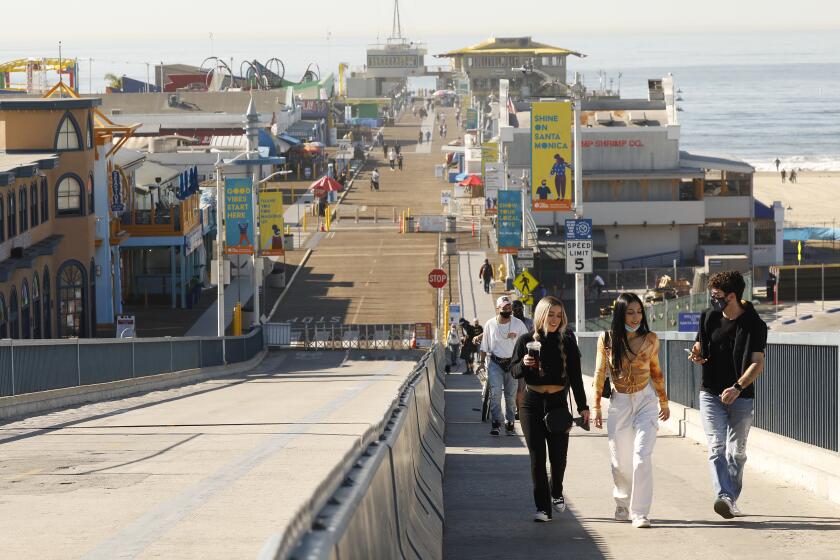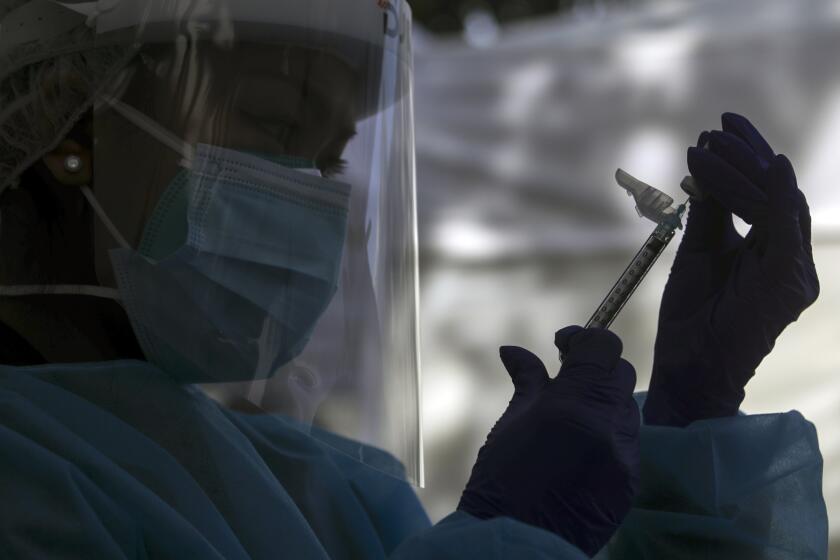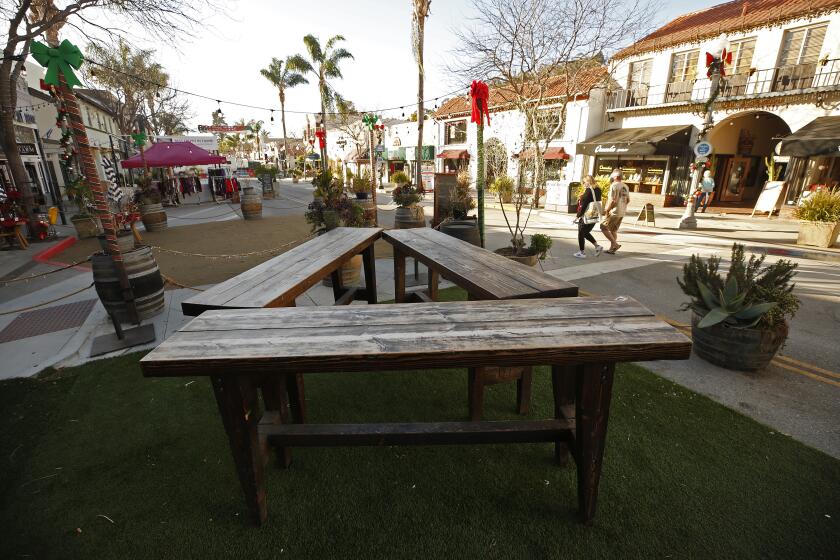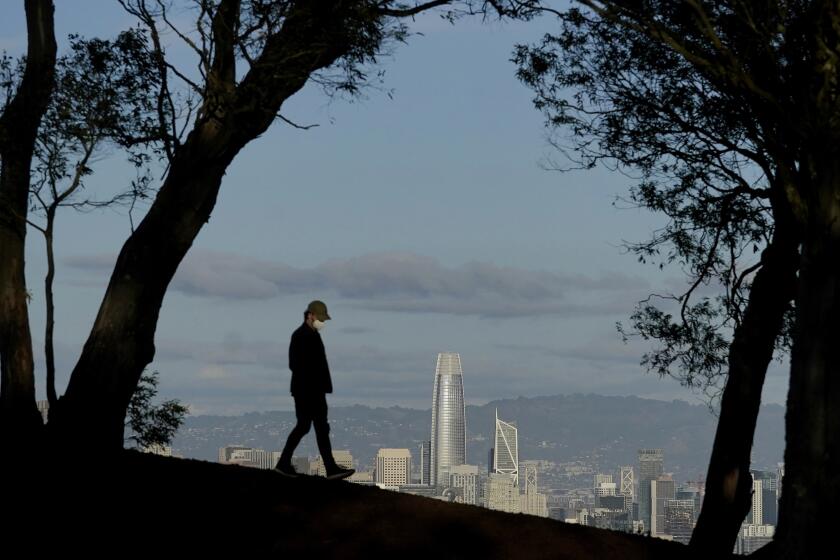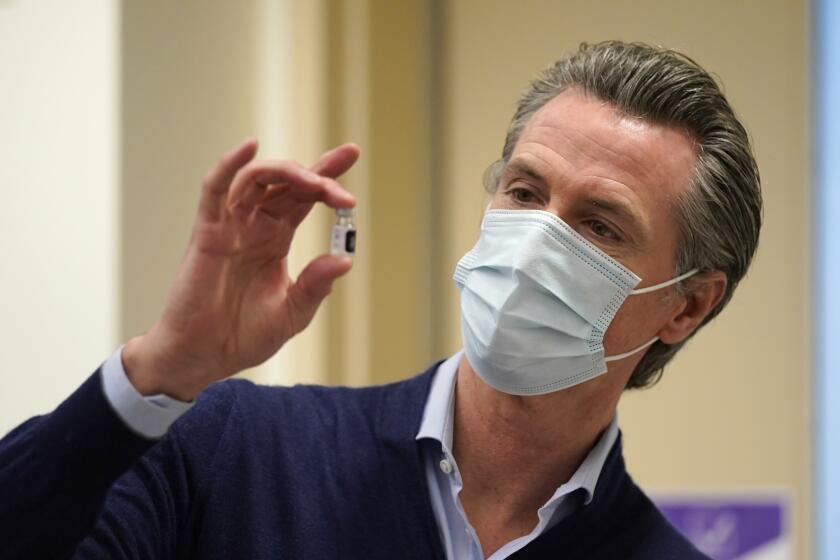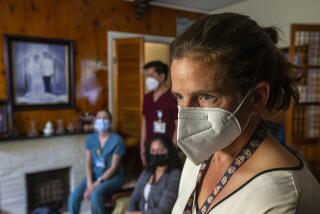L.A. County approaching 1 million coronavirus cases as officials brace for new hospital surge
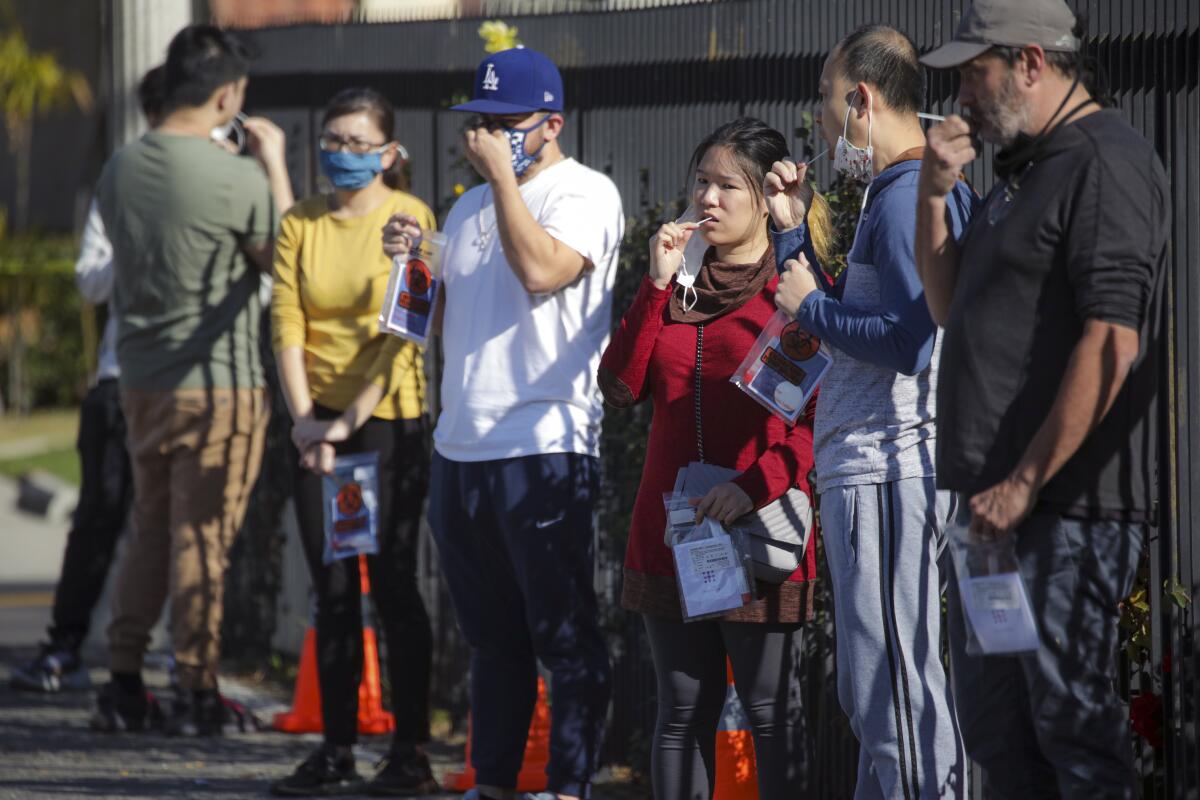
- Share via
Los Angeles County is fast approaching 1 million confirmed coronavirus cases, a massive milestone that means 1 out of every 10 Angelenos has been infected at some point during the pandemic.
That L.A. County, by far the nation’s most populous, has such a high case count is not a shock, but the rapidity with which infections have grown is staggering.
It took the county nearly 11 months to top 500,000 coronavirus cases, which occurred in mid-December. At the current rate, L.A. County will crest the 1-million mark by the end of this week, doubling its colossal case count in a month.
The approaching benchmark comes two weeks before the one-year anniversary of the county’s first confirmed coronavirus case.
The latest maps and charts on the spread of COVID-19 in Los Angeles County, including cases, deaths, closures and restrictions.
Even after residents spent months of living with the threat of COVID-19, and under various restrictions aimed at curbing transmission of the virus, officials say it’s more important than ever for people to rededicate themselves to infection-prevention protocols, and redouble their efforts to keep themselves and their loved ones safe.
“Now is not the time to meet up with friends at your home to watch the game. It’s not the time to go for a walk without your face covering,” L.A. County Public Health Director Barbara Ferrer said.
“All it takes is one mistake and soon, five, 10 or 20 other people become infected. This deadly virus continues to spread at alarming rates, and the most important way to stop it in its tracks is to avoid interactions with others and protect ourselves at all times.”
People who live with the elderly or with those who have underlying medical conditions and must go out of their households should mask up at home, an official says.
On Tuesday, a tally of local health jurisdictions found 318 deaths reported in L.A. County, tying the record single-day high of deaths recorded on Friday.
Daily coronavirus cases are also increasing. On Tuesday, 14,134 new coronavirus cases were recorded in L.A. County. That pushed L.A. County to average more than 15,000 coronavirus cases a day over the past week, one of the worst daily averages recorded in L.A. County and a warning sign of a future surge of hospitalizations.
On Monday, Ferrer forecast that averaging 15,000 cases a day — a rate at which has not been seen in a sustained way in L.A. County — would likely be a precursor to an even worse surge in hospitalizations. “Should we start seeing again case numbers rise to 15,000 a day, we will have another experience like we had before at our hospitals, where they will see increased occupancy as well,” Ferrer said on Monday.
L.A. County has recorded a cumulative total of 947,035 cases as of Tuesday afternoon.
The sustained high number of cases is distressing in the near term — as it demonstrates the breakneck speed with which the disease is blazing through the community — and portends disaster in the weeks ahead as hundreds of additional Angelenos fall ill enough to require hospitalization.
More than 2,300 people countywide have died from COVID-19 since New Year’s Day, and L.A. County has averaged about 231 COVID-19 deaths daily over the last week, a rate higher than any during the pandemic.
Los Angeles County will officially expand the eligibility of vaccine recipients starting Monday, following guidance from the state.
While the arrival of vaccines in the last month foreshadows the eventual end of the pandemic, they will offer little immediate relief — particularly as officials gird for the possibility that L.A. County’s already harrowing numbers could deteriorate further in the wake of a new holiday-fueled surge.
“We understand it’s been a long and exhausting journey these past 12 months,” Ferrer said. “With the rollout of vaccinations, there’s hope for a brighter future. However, we need to make sure that everyone survives to benefit from the vaccine.”
The county’s daily case counts have fluctuated in recent weeks, but officials have said those variations are linked to seasonal delays in data reporting and testing interruptions, and higher infection numbers are likely.
“Just like what occurred after Christmas, and the dip, we fully expect to see another increase now that we’re almost two weeks out from the New Year’s holiday,” Ferrer said during a briefing Monday.
Based on those predictions, officials are recommending further safety measures, going so far as to urge people who must go out of their households to even wear a mask at home if they live with an elderly person or someone who has an underlying medical condition.
When leaving home to access essential services, Ferrer added, people should bring sanitizing wipes to disinfect their phones, car keys and anything else others may have touched, including work stations and door handles.
“Now is the time to stay home as much as possible,” she said. “Now is the time to avoid, as much as possible, contact with others that aren’t in your household.”
Coronavirus cases have surged in Ventura, Santa Barbara and San Luis Obispo counties, where demand for ICU beds could overwhelm the region’s supply.
Lowering the number of new infections, officials say, is the only way to prevent more people from dying of COVID-19 and to relieve stress on the region’s healthcare system.
Though the number of COVID-19 patients hospitalized countywide has stabilized recently, at just shy of 8,000, the sustained increase has forced some county hospitals to set up beds in hallways and even in gift shops and keep some patients waiting in ambulances for as many as 17 hours before room in the emergency room opens up.
Quality of care at hospitals around the state has suffered, officials have said. In L.A. County, funeral homes are so overwhelmed that they’ve turned families away, and the National Guard has been called to help move bodies from crowded hospital morgues to store at the L.A. County coroner’s office temporarily until the backlog eases.
In L.A. County, a number of hospitals have been forced to declare internal disasters in recent weeks, receiving permission to close their emergency departments to ambulances because of staffing problems and breakdowns of their oxygen supply systems — crucial to keep COVID-19 patients alive.
“We want to make sure that whether you have COVID or need some other form of care for a heart attack, a stroke, a traumatic injury, a car accident, that the lifesaving services of hospitals are there for you,” said Dr. Christina Ghaly, the county’s director of health services.
Any new spike in infections, officials warn, will trigger a resulting wave of new patients requiring professional care — creating an unsustainable strain on already overtaxed hospitals and intensive care units.
And L.A. is seeing “signs of this deadly surge continuing, even though the numbers of hospitalized patients across the county have stabilized for now,” Ghaly said during a briefing Monday.
“We’re watching the data very carefully over the next couple of days, as this is the time when we would anticipate beginning to see the surge in patients from the recent Christmas and New Year’s holidays,” she said.
State officials, however, have struck a more optimistic tone this week, saying that while the ramifications of recent travel and gatherings have yet to be fully realized, it appears that the post-holiday surge may not be as severe as expected.
The number of coronavirus-positive patients hospitalized throughout California has plateaued at just under 22,000, and new COVID-19 admissions have also declined — from roughly 3,500 patients a day last week to between 2,500 and 2,600, according to Dr. Mark Ghaly, California’s health and human services secretary.
While the number of cases can be skewed by how many people are being tested, and when those results are being reported, he said Tuesday that “hospital numbers don’t lie.”
“People come to the hospital, they get the care that they need when they need it because they’re that sick,” he said during a briefing. “And so, to see a reduction in our hospital numbers in the last week to 10 days, in terms of the rate of rise, I think is a very encouraging sign. But we’re not out of the woods. We know that there’s still a lot of COVID in our communities, that people can easily transmit it.”
That’s also not to say a decline is imminent. Ghaly said “we are preparing and anticipate that some increase in hospitalizations will come in the middle of the month.”
“We’re just hopeful it’s not as significant as we expected and, certainly, not as significant as it would have been had we not seen these reductions in transmission, in part because of that regional stay-at-home order,” he said, referring to the additional restrictions on businesses and activities imposed on specified swaths of the state when the available capacity in their ICUs falls below 15%.
The city’s post-December rise in coronavirus cases is lower than Thanksgiving’s, but infections are still rising, Mayor London Breed and others say.
The reduced rate of new cases and hospitalizations is welcome news after weeks of sustained, steep increases.
Dr. Grant Colfax, San Francisco’s director of public health, said coronavirus cases rose by 70% after Thanksgiving and by an additional 28% since Christmas and New Year’s.
“The rate of increase is not as severe as after Thanksgiving,” Mayor London Breed said at a news conference Tuesday. “This is some good news.”
Still, she said, the Bay Area remains in a “very difficult” position. The region on Monday saw close to zero capacity in its hospital ICUs.
However, Gov. Gavin Newsom announced Tuesday that the state would lift its stay-at-home order for Greater Sacramento effective immediately, making the region the first to emerge from the additional restrictions on businesses and activities imposed in hopes of blunting the coronavirus surge.
The counties included in the region — Alpine, Amador, Butte, Colusa, El Dorado, Nevada, Placer, Plumas, Sacramento, Sierra, Sutter, Yolo and Yuba — will return to the state’s color-coded tier framework that determines how widely commercial and public spaces can reopen.
“California remains in its most intense surge to date,” Newsom said in a brief video message announcing the move. “But there are some good things to report. We’re starting to see some stabilization both in ICUs [and] in our positivity rate. We’re also starting to see the rate of growth for hospitalizations beginning to decline.”
The region is the first to emerge from the additional restrictions on businesses and activities imposed last month in hopes of blunting the coronavirus surge and shielding hospitals from an overwhelming influx of patients.
Any progress is tenuous, though. The reality, Ghaly, the state health secretary, said, remains that “if you give COVID an inch, it will take a mile.”
“We must continue to keep our guard up, we must continue to work together to do what we can to reduce transmission,” he said.
In the meantime, he said this week, “we continue to reach out to get additional staff for the hospitals. We’re continuing to assess the oxygen situation, making sure that the 911 systems are robust and able to go to the places with capacity.”
“This week,” Newsom added, “in so many ways will be determinative.”
Times staff writer Maura Dolan contributed to this report.
More to Read
Sign up for Essential California
The most important California stories and recommendations in your inbox every morning.
You may occasionally receive promotional content from the Los Angeles Times.

